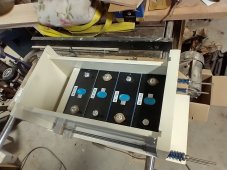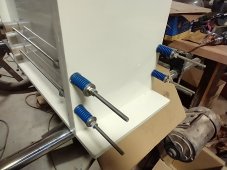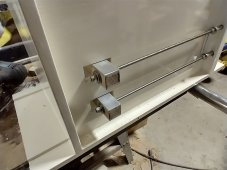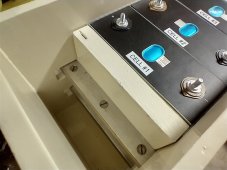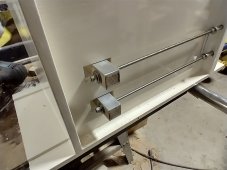I just downloaded the newer datasheet for EVE LF280K cells from June 2023
from here (thanks). On these cells, Eve applied a clamping force of 300 kgf for all tests. Elsewhere in the document (section 4.4.2), they describe a minimum of 3000 Newtons (roughly the same value, with gravity at sea level) as the minimum, 7000 Newtons as the maximum value of the 'recommended' range. That minimum is 661 pounds. The dimensions of the large sides are 204.6 "height" (excluding the terminals) and173.3 "length" sideways, an area of 35457.18 square mm. That's 54.96 square inches. The 661 pound force is 12.0 PSI, and that's the
minimum recommended value.
They used clamping plates of 10mm thickness (almost .40 inches), with 6 bolts applying clamping force (not just 4). They used bolt size M8 (not M6), although M6 or 1/4 inch steel rod can probably also handle a tensile force 110 - 180 lbs per rod without breaking. In my previous 4S battery pack builds with smaller cells, I have used 1/4" steel plates (insulated) to apply lower clamping forces, and I saw those plates begin to warp when I the compression springs all the way in.
I have already purchased 1/4" compression plates for my new LF280K battery pack, but I will also be adding add 3 segments of horizontal L-Bar across the plates (on the plates, underneath the springs) to reduce the tendency of my thinner plates to warp. (Pictures coming after the parts arrive.)
